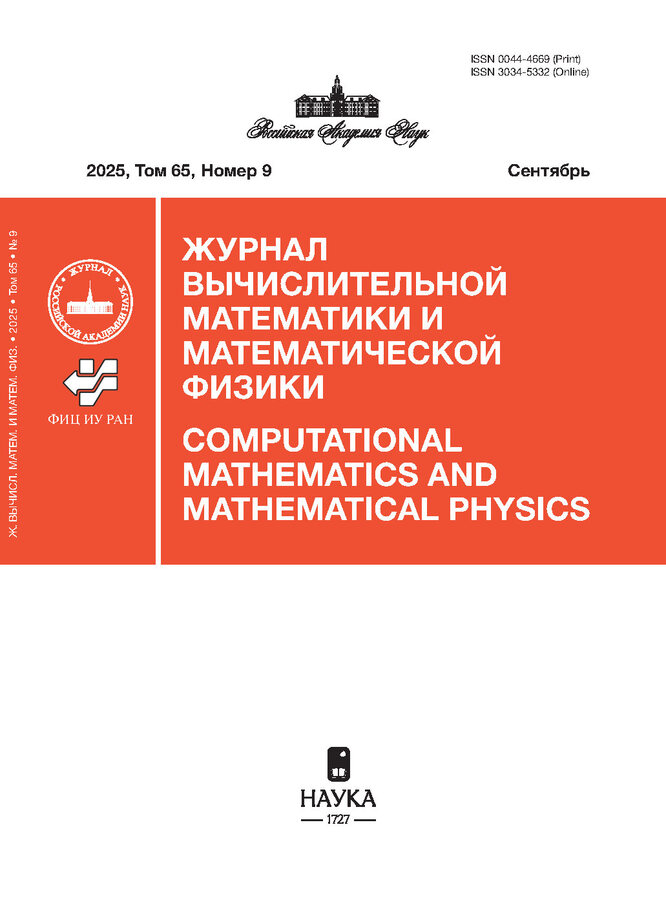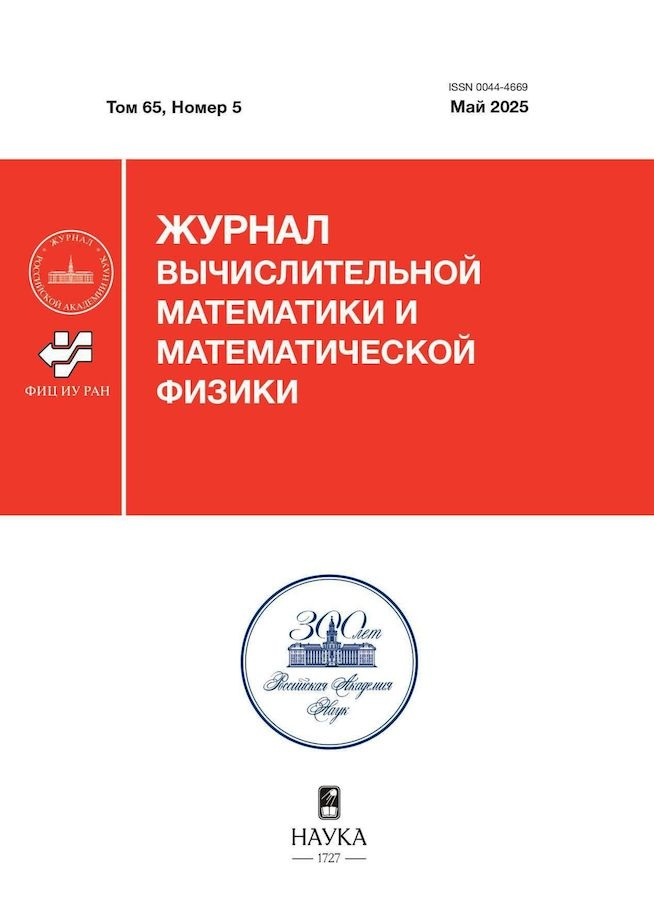О НАПРАВЛЕНИИ ДВИЖЕНИЯ БЕГУЩИХ ВОЛН
- Авторы: Веденеев В.В.1
-
Учреждения:
- МИАН им. В.А. Стеклова РАН
- Выпуск: Том 65, № 5 (2025)
- Страницы: 608-624
- Раздел: УРАВНЕНИЯ В ЧАСТНЫХ ПРОИЗВОДНЫХ
- URL: https://rjpbr.com/0044-4669/article/view/686920
- DOI: https://doi.org/10.31857/S0044466925050015
- EDN: https://elibrary.ru/IFZODU
- ID: 686920
Цитировать
Полный текст
Аннотация
В ряде задач, связанных с пространственным распространением волн, необходимо различать волны, движущиеся в одну и в другую стороны. Примерами таких задач являются распространение волн из точечного пульсирующего источника; задача о пространственных оптимальных возмущениях; задача об определении абсолютного или конвективного характера неустойчивости и др. Кроме того, при расчете движения волн в неоднородной среде маршевыми методами для численной стабилизации используется проектирование решения на пространство распространяющихся в одном направлении волн, для чего также необходим их корректный отсев. Общепринятыми в литературе индикаторами направления движения волны являются критерий Бриггса, вытекающий из принципа причинности, и — в некоторых работах — знак групповой скорости. В настоящей статье обсуждаются их интерпретации и связь между ними. Приводятся примеры, когда идентификация направления волны по знаку групповой скорости является ошибочной и приводит к качественно неверным результатам. Впервые рассмотрен случай, когда прямое применение критерия Бриггса невозможно из-за поглощения дискретной моды, описывающей волну, непрерывным спектром. Дано обобщение критерия Бриггса на этот случай и приведены примеры его применения. Библ. 24. Фиг. 13.
Ключевые слова
Список литературы
- Hersh R. Boundary conditions for equations of evolution // Arch. Rat. Mech. Anal. 1964. Vol. 16(4). P. 243–264.
- Andersson P., Berggren M., Henningson D.S. Optimal disturbances and bypass transition in boundary layers // Phys. Fluids. 1999. Vol. 11. P. 134–150.
- Reshotko E., Tumin A. Spatial theory of optimal disturbances in a circular pipe flow // Phys. Fluids. 2001. Vol. 13. P. 991–996.
- Ivanov O.O., Ashurov D.A., Gareev L.R., Vedeneev V.V. Optimal disturbances in round submerged jets // J. Fluid Mech. 2023. Vol. 963. Paper A8.
- Ашуров Д.А., Никитин Н.В. Развитие стационарных возмущений в пространственно развивающейся струе // Изв. РАН. МЖГ. 2024.№4. С. 94–102.
- Ashurov D.A. Optimal disturbances in round submerged jets // Phys. Fluids. 2024. Vol. 36. Paper 104118.
- Schmid P.J., Henningson D. S. Stability and transition in shear flows. Springer, 2001. 558 p.
- Towne A., Colonius T. One-way spatial integration of hyperbolic equations // J. Comp. Phys. 2015. Vol. 300. P. 844–861.
- Towne A., Rigas G., Kamal O., Pickering E., Colonius T. Efficient global resolvent analysis via the one-way Navier–Stokes equations // J. Fluid Mech. 2022. Vol. 948. Paper A9.
- Zasko G.V., Boiko A.V., Demyanko K.V., Nechepurenko Y.M. Simulating the propagation of boundary-layer disturbances by solving boundary-value and initial-value problems // Russ. J. Numer. Anal. Math. Modelling. 2024. Vol. 39(1). P. 47–59.
- Бойко А.В., Демьянко К.В., Засько Г.В., Нечепуренко Ю.М.О параболизации уравнений распространения малых возмущений в двумерных пограничных слоях // Теплофизика и аэромеханика. 2024.№3. С. 423–440.
- Веденеев В.В. Математическая теория устойчивости плоскопараллельных течений и развитие турбулентности. Долгопрудный: Издательский Дом “Интеллект”, 2016. 152 с.
- Кочин Н. Е., Кибель И. А., Розе Н. В. Теоретическая гидромеханика. Часть 1. М.: Физматгиз, 1963. 584 с.
- Ландау Л. Д., Лифшиц Е. М. Теоретическая физика. Том 6. Гидродинамика. М.: Наука, 1986. 736 с.
- Петровский И. Г. О проблеме Коши для систем линейных уравнений с частными производными в области неаналитических функций // Бюлл. Моск. Ун. Секция А. Математика и механика. 1938. Т. 1. Вып. 7. С. 16.
- Briggs R. J. Electron-Stream Interaction with Plasmas. MIT Press, 1964. 187 p.
- Ashpis D. E., Reshotko E. The vibrating ribbon problem revisited // J. Fluid Mech. 1990. Vol. 213. P. 531–547.
- Ахиезер А. И., Половин Р. В. Критерии нарастания волн // УФН. 1971. Т. 104.№2. С. 185–200.
- Лифшиц Е. М., Питаевский Л. П. Теоретическая физика. Том 11. Физическая кинетика. М.: Наука, 1979. 528 с.
- Gaster M. A note on the relation between temporally-increasing and spatially-increasing disturbances in hydrodynamic stability // J. Fluid Mech. 1962. Vol. 14(2). P. 222–224.
- Zayko J., Teplovodskii S., Chicherina A., Vedeneev V., Reshmin A. Formation of free round jets with long laminar regions at large Reynolds numbers // Phys. Fluids. 2018. Vol. 30. Paper 043603.
- Gareev L.R., Zayko J.S., Chicherina A.D., Trifonov V.V., Reshmin A.I., Vedeneev V.V. Experimental validation of inviscid linear stability theory applied to an axisymmetric jet // J. Fluid Mech. 2022. Vol. 934. Paper A3.
- Batchelor G.K., Gill A.E. Analysis of the stability of axisymmetric jets // J. Fluid Mech. 1962. Vol. 14 (4). P. 529–551.
- Vedeneev V., Zayko J. On absolute instability of free jets // J. Phys.: Conf. Ser. 2018. Vol. 1129. Paper 012037.
Дополнительные файлы











